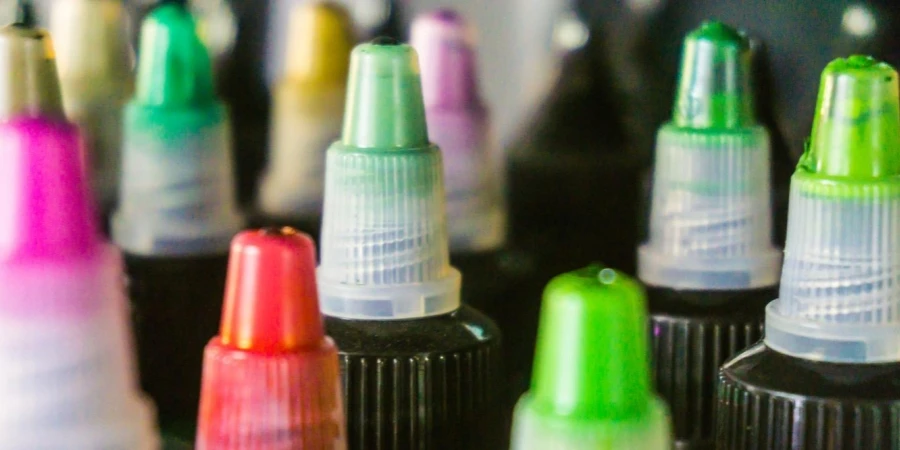Table of Contents
1. Introduction
2. Market Overview of Tattoo Ink in 2025
3. Key Considerations for Selecting Tattoo Ink
4. Leading Tattoo Ink Brands and Their Features
5. Conclusion
Introduction
In the world of tattoo artistry, the ink used plays a role in shaping the overall look of a tattoo design, affecting its colors, application smoothness, and durability over time. High-quality inks are key to achieving vibrant colors that last long and provide a smooth application experience. Conversely, using low-quality inks can jeopardize a tattoo’s aesthetic appeal and safety. With constant advancements in ink formulations, modern tattoo inks come with a wide range of advantages; these include eco-friendly options and specially crafted products for specific tattoo styles, like black and gray or full-color designs. In the tattoo industry, success hinges on choosing the right ink to elevate the artist’s work and delight customers while meeting standards.

Market overview of tattoo ink in 2025
Market size and growth
The tattoo ink market worldwide has been steadily growing over the years with expectations of future growth. Based on projections from the DataBridge Market research report, the market value was at $538 million in 2023 and is predicted to reach $742 million by 2031 with an annual growth rate of 4.1% from 2025 to 2032. The increasing presence of tattoo studios globally is one of the key factors fueling this market expansion. The popularity of art is growing worldwide, with countries and regions embracing it as a mainstream form of expression, leading to a rise in the need for top-notch tattoo inks.
Current trends
In 2025, important trends shaping its development trajectory will influence the tattoo ink market. There is a trend towards prioritizing safety and quality standards in the industry as tattoos gain popularity among a large audience. Clientele is now more conscious of the health risks of some inks containing elements such as metals or chemicals. This increased awareness has led manufacturers to create inks that adhere to safety regulations by governing bodies like the FDA.
A notable shift in the industry is the increasing popularity of vegan and organic tattoo inks due to the rising interest in ethical and eco-friendly products among consumers. This type of ink excludes animal-based harmful chemicals. A favorite among artists aiming to provide cruelty-free options for their customers. Organic pigments are also considered good choices compared to ones reinforcing the emphasis placed on well-being and sustainability within the tattoo community.
Personalization plays a role in the market these days. A lot of artists are now opting for inks that are suited to various artistic styles. Be it bright and vibrant color schemes for colorful designs or specific gray wash formulas for intricate black and gray tattoos. This growing need for inks has made a wider range of products available, with various brands creating customized solutions for different tattoo techniques.
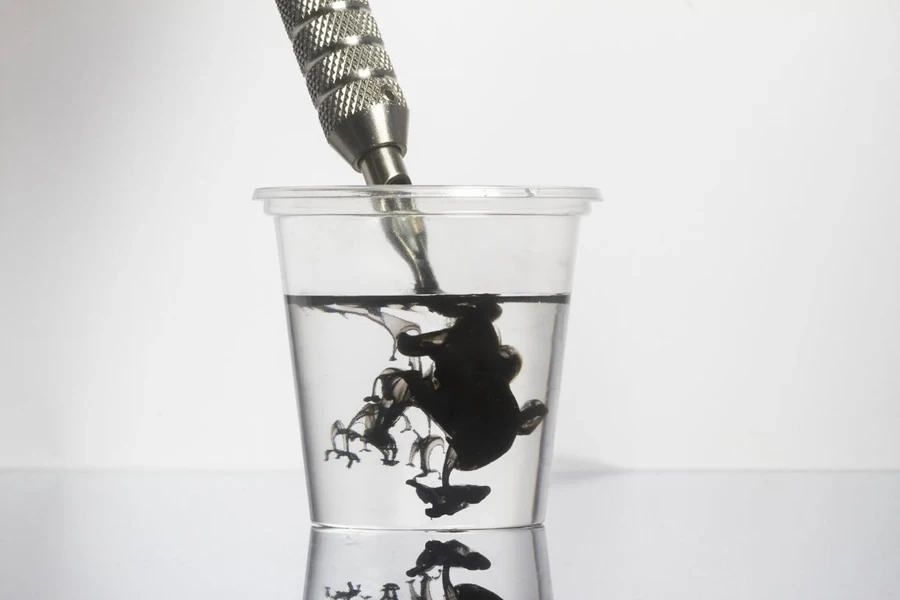
Key considerations for selecting tattoo ink
Safety and purity
When choosing tattoo ink for a client’s skin and well-being, maintenance is a factor to be mindful of as it directly impacts their health and skin condition The top quality inks go through a thorough examination to guarantee they adhere to safety guidelines established by regulatory bodies such as the FDA in the U.S or REACH in Europe These rules aim to lower the chances of allergic responses and infections by restricting harmful elements like heavy metals formaldehyde and other dangerous substances typically present, in lower grade inksSterile facilities. Tattoo inks made in sterile settings help reduce the chances of contamination while getting a tattoo done. With more people being informed about product details, tattoo artists and their clients need ingredient lists they can rely on for product safety assurance.
Color variety and performance
In tattoo ink, the variety and quality of colors play a key role for artists aiming to showcase diverse artistic styles and designs through their work. They have access to a selection of subtle colors that cater to the unique requirements of various tattoo styles like realism or traditional art forms. Black and gray ink are commonly used for shading and outlining purposes, whereas colored inks are gaining popularity for creative tattoo designs. Top-notch tattoo inks don’t just provide enduring colors; they’re also designed to resist fading to maintain the tattoo’s vibrancy over time. Moreover, the artistic blend of colors is crucial for achieving the desired result, which is a major factor for any tattoo artist.
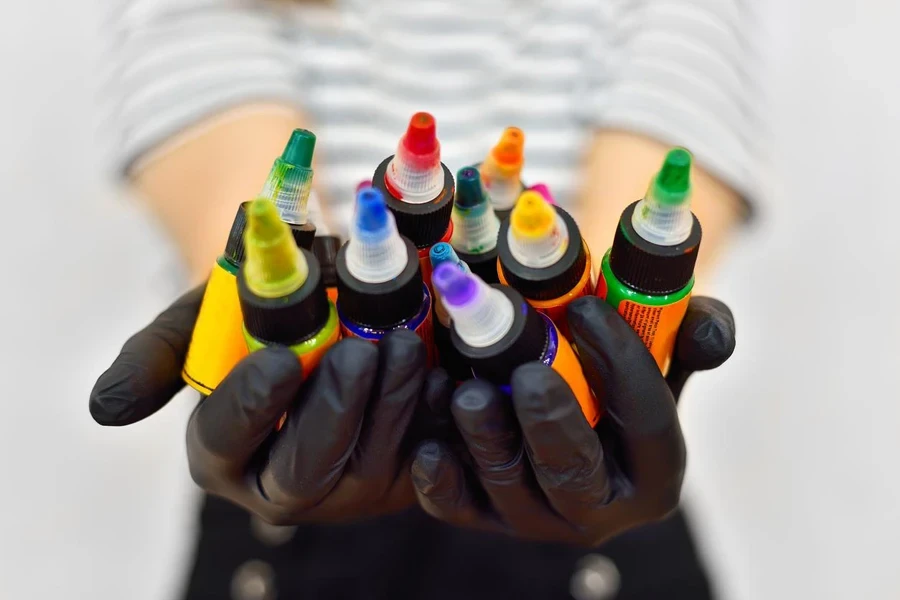
Consistency and flow rate
The smoothness and viscosity of ink play a role in how well it can be applied and the overall look of the tattoo once it’s done. When the ink is too thick, it can be tricky for artists to work with, making it tough to create lines or get colors right. On the other hand, if the ink is too thin, it tends to spread much, leading to streaks or uneven coloring. Achieving the equilibrium guarantees that the ink glides effortlessly from the needle onto the skin for precision by the artist. Aside from that, various carrying agents, like alcohol or glycerin, can impact the texture and movement of ink, enabling artists to choose mixtures that match their tattooing methods.
Ethical considerations
Ethics plays an important role worldwide, with artists and customers choosing inks that follow vegan and cruelty-free principles more frequently now than ever. Vegan tattoo inks are made without animal-derived components such as gelatin or bone char, sometimes found in traditional inks. These vegan-friendly inks also steer clear of animal testing practices to support consumerism. In addition to vegan choices, inks are becoming more popular for using natural pigments that help lessen the environmental impact of getting inked. These inks are created using plant-derived or mineral pigments, steering clear of chemicals to offer a safer and eco-friendly option in the tattoo industry market segment.
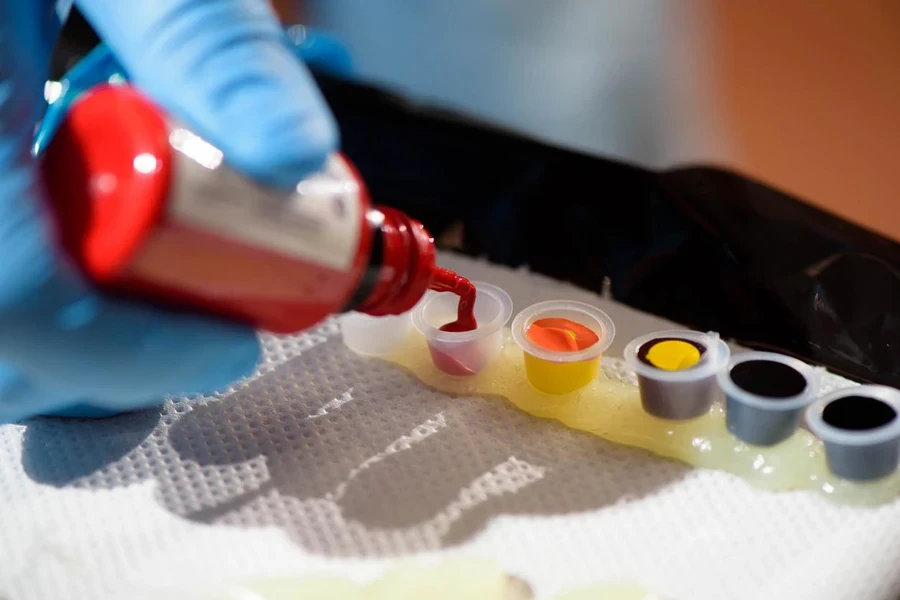
Best-selling tattoo ink types in the market
The tattoo industry is expanding rapidly, with different types of inks emerging as top choices among artists and customers for their distinct qualities and popularity in the market scene.
Black and gray inks
Black and gray inks play a role in the art world and are always in demand because of their flexibility and enduring popularity. Tattoo artists rely heavily upon these inks for outlining designs. They add depth to their work across styles ranging from traditional to realistic portraits. Among these inks, black is especially favored for its lasting quality and ability to retain its sharpness and clarity over the years. Moreover, gray tattoo artists still prefer washing systems to achieve seamless transitions and delicate shades. This particular technique continues to be in demand due to its universal nature across different styles and its capacity to fulfill both fundamental and sophisticated artistic requirements.
Colored tattoo inks
Colored tattoo inks are chosen among artists aiming to enhance their range with a wide array of vibrant colors. They stay vivid and resist fading over time based largely on the pigment concentration they contain. Brighter and more enduring outcomes are typically achieved using inks with higher pigment content. The need for various colors has increased in trendy tattoo styles such as neo-traditional and watercolor; vibrant hues are key in bringing artistic ideas to life. The trend towards bespoke designs has driven the desire for multi-colored sets of ink that allow artists to mix and match shades with ease to create their desired effects.
Organic and vegan inks
The demand for vegan inks is skyrocketing as more consumers are showing a keen interest in health-conscious and environmentally friendly products in the market nowadays. These inks are produced without any animal-derived ingredients or harmful chemicals involved in the process to attract customers who value sustainability and ethical standards. Artists who cater to clients with sensitive skin conditions or allergies towards pigments particularly appreciate using vegan and organic inks. These crafted inks are designed to lower the chances of any reactions occurring and provide a safer option for both the artists and their clients. The increasing demand for these products indicates a trend in the market towards environment and health-conscious supplies.
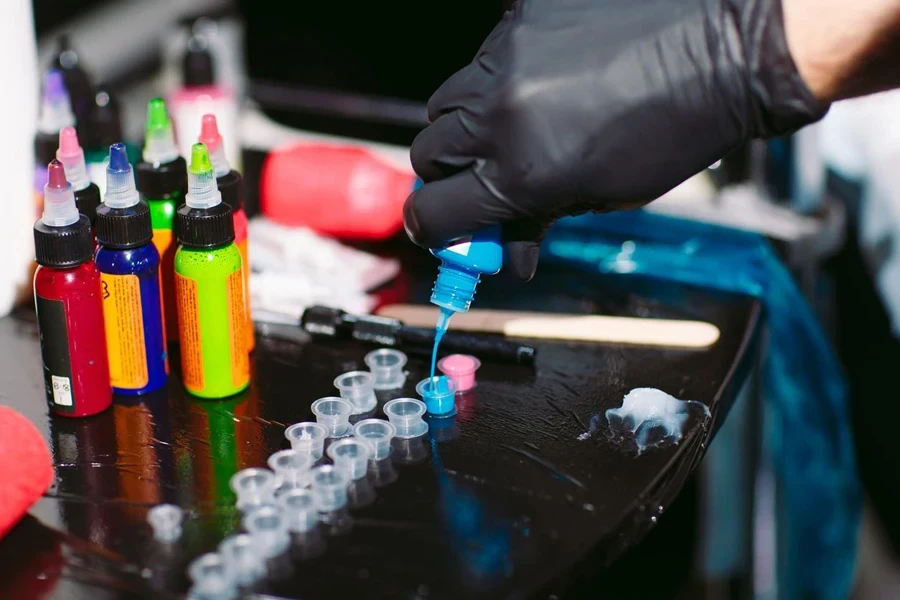
UV and specialty inks
UV and glow-in-the-dark tattoo inks are still attracting market groups who are interested in one-of-a-kind or subtle body art designs. The specialty inks are made to shine under light for an effect that may not be noticeable under regular circumstances. Although these inks are not commonly used as colored inks, people find them appealing due to their uniqueness and capability to produce unique tattoos. These tattoo inks are trendy among groups and individuals looking for unique and artistic tattoo choices to explore further possibilities in body artistry. They require extra attention and upkeep due to the importance of shielding them from sunlight to ensure their lasting vibrancy and resilience.
Conclusion
Finding the best tattoo ink in 2025 involves considering important aspects and prioritizing safety and artistic excellence. As ink technology progresses, tattoo inks come in various types, like gray, colored organic, and vegan options, alongside UV inks. Safety criteria and purity are key, focusing more on non-toxic, cruelty-free, and hypoallergenic products. Color diversity and how well they last contribute to maintaining brightness and longevity. In today’s world, where there is a growing interest in eco-plant-based tattoo inks, ethical considerations are key. For business professionals in the tattoo industry, understanding these trends and selecting inks that align with market preferences can significantly impact customer satisfaction and business success.
